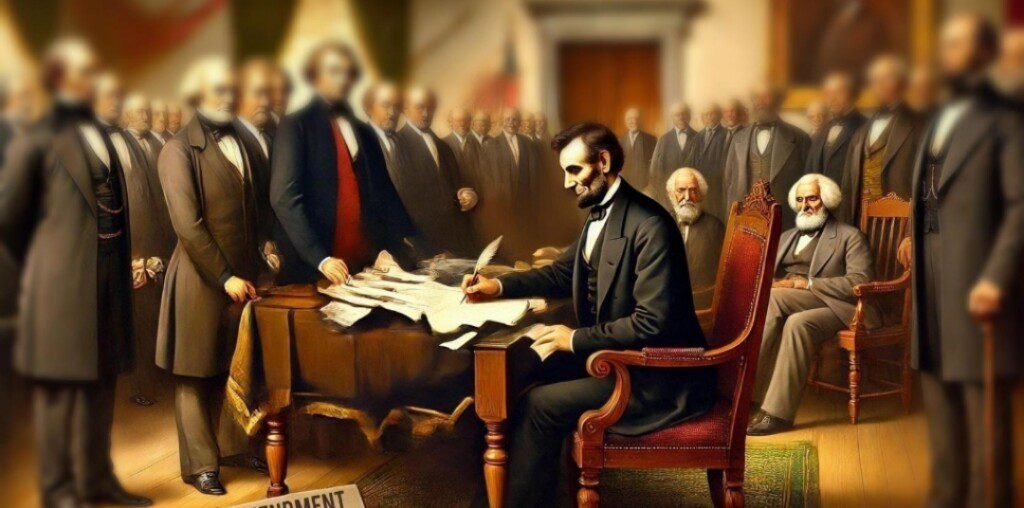Background: Slavery in the United States began in 1619 when British settlers brought enslaved Africans to North America. Over two centuries, slavery became deeply entrenched in the Southern economy, where enslaved labor was used primarily for agriculture, particularly in cotton and tobacco plantations. The abolitionist movement gained momentum in the 19th century, with activists like Frederick Douglass and Harriet Tubman advocating for the end of slavery. The Civil War, which began in 1861, intensified the debate over the institution of slavery.
What Happened: On February 1, 1865, President Abraham Lincoln signed the 13th Amendment to the United States Constitution, officially abolishing slavery. The amendment declared that “neither slavery nor involuntary servitude, except as a punishment for crime whereof the party shall have been duly convicted, shall exist within the United States.” Although it needed ratification by the states, it was a landmark step in the struggle for equality.
Impact for the Future: The abolition of slavery marked a turning point in American history. It paved the way for Reconstruction, the Civil Rights Movement, and ongoing efforts to combat racial discrimination. Though the fight for true racial equality continues, the 13th Amendment remains a cornerstone of American democracy.

